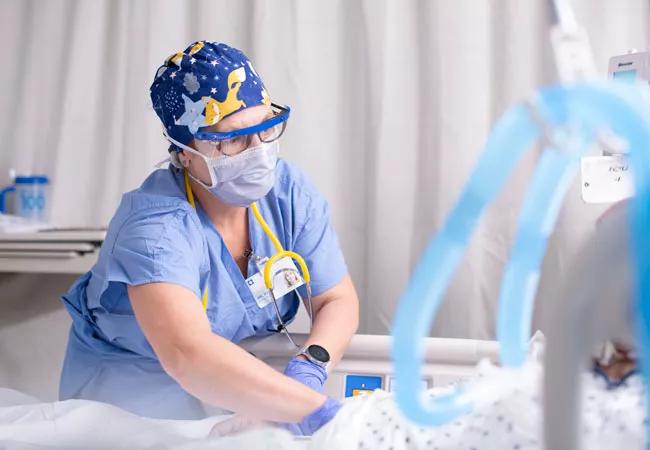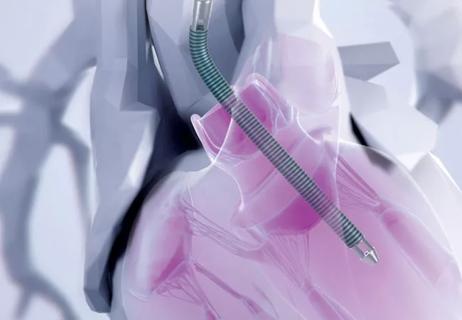Cleveland Clinic research emphasizes taking a holistic and individualized approach to care of septic shock

Treatment for septic shock in the ICU is standardized across all patients and involves a combination of antibiotics, fluids and sequential addition of vasoactive medication. But recent research has questioned whether these therapies should be personalized based on the patient’s underlying cardiovascular function.
Advertisement
Cleveland Clinic is a non-profit academic medical center. Advertising on our site helps support our mission. We do not endorse non-Cleveland Clinic products or services. Policy
Septic shock is a deadly condition with a very high mortality rate. Patients admitted to the intensive care unit with septic shock only have a 60% chance of survival. As infection starts, the vessels in the body dilate, causing the blood pressure to drop and reducing blood flow to critical organs, eventually leading to organ failure.
Vasoactive medication helps restore blood pressure and prevent organ failure by maintaining blood flow to critical organs. However, these vasoactive agents can negatively affect the heart, and in most cases, a patient’s heart function is not assessed in the decision-making process of selecting the best agent to restore blood pressure.
Typically, vasoactive medications are added sequentially to increase the blood vessel tone and heart contractility, under the assumption of normal underlying cardiac function. When cardiac function is uncertain or impaired, the choice of vasoactive medication becomes particularly crucial, as each agent has a distinct effect on myocardial contractility. Administering vasoactive therapy without a clear understanding of the underlying cardiac function may inadvertently worsen cardiac performance and contribute to adverse clinical outcomes.
Clinicians frequently observe hyperdynamic heart in the context of septic shock. But the relationship between sepsis and this hyperdynamic state, its prognostic implications and its influence on the selection of vasoactive medications remain incompletely understood.
While it was previously thought that septic shock could induce dysfunction of the heart and heart failure in its most severe forms, Cleveland Clinic researchers demonstrated that the proportion of patients with heart failure is similar to patients with hyperdynamic heart, i.e., super-normal heart.
Advertisement
Both of these cardiac complications were associated with a higher risk of dying in septic shock, explains Cleveland Clinic intensivist Siddharth Dugar, MD.
Dr. Dugar was senior author on his latest paper, “Prevalence and prognosis of hyperdynamic left ventricular systolic function in septic patients: a systematic review and meta-analysis,” which was published last year in the Annals of Intensive Care.
The paper compiled findings from four major studies and demonstrated that the risk of dying with a hyperdynamic heart in sepsis is 2.5 times higher compared to someone with a normal heart, a finding consistent with prior research on the topic.
“The implication is that providers should look at the underlying heart function and treat it accordingly,” he says. “It makes sense — both physiologically and clinically — to choose the vasoactive agents based on the underlying heart function.”
Dr. Dugar explains that it was important to study the issue because they have seen a connection between septic shock and hyperdynamic heart in clinical practice.
“This is what we see at the bedside,” he says. “I think every expert agrees on the connection, but there wasn’t enough literature to support it.”
Currently, providers take a one-size-fits-all approach to treating septic shock in the ICU, but these findings should encourage greater precision, he explains.
While antibiotics should still be given to all patients, the use of fluids and vasopressors should be based on the individual patient’s heart function. The choice and combination of medications should also be individualized, he notes.
Advertisement
“From my perspective, basing treatment decisions solely on the diagnosis instead of looking at the patient holistically is not appropriate,” says Dr. Dugar. “Our findings suggest that if you have more precise management that is based on the underlying hemodynamics, you may be able to improve outcomes in this group of patients.”
Additional research by Dr. Dugar and colleagues also found increased rates of hyperdynamic circulation in patients with septic shock and cirrhosis, which suggests a need for more targeted treatment.
Their paper, “Hemodynamic profile of cirrhotic patients with sepsis and septic shock: A propensity score matched case-control study,” was published last year in the Journal of Critical Care and explored the reason behind this hyperdynamic heart.
Dr. Dugar explains, “It was very common to assume the hyperdynamic heart observed in cirrhosis is from dehydration and was routinely treated with fluids and albumin. We observed that the actual reason was the uncoupling of the heart from the arterial system. The arterial vessels are very dilated from loss of tone, and the hyperdynamic function observed is the heart trying to match this loss of tone in the arterial system.”
Dr. Dugar believes treatment should focus more on restoring the tone of blood vessels with vasoactive agents that predominantly act on those blood vessels. This coupling information can be used to decide the most apt vasoactive agent and titrated accordingly.
In addition to discovering the mechanism of these hyperdynamic hearts or “super-normal hearts,” the research group is planning additional studies to investigate the optimal use of fluids and choice of vasopressors based on underlying cardiac function. The group also plans to conduct follow-up studies looking at whether patients’ cardiac function returns to normal or if problems persist after recovering from sepsis.
Advertisement
Advertisement

Aortic valve replacement is best option for lowering mortality in this high-risk population

How Cleveland Clinic transformed a single ultrasound machine into a cutting-edge, hospital-wide POCUS program

Nurse-led research provides surprising insights

AHA scientific statement outlines models for high-intensity staffing, specialized expertise and more

Transvalvular LVAD support transforms emergency surgery into urgent procedure

Dynamic modeling improves the accuracy of outcome predictions for ICU patients

Fellow critical care nurses welcome additional support and expertise

Preoperative Impella 5.5 placement can provide a critical safety net for high-risk patients